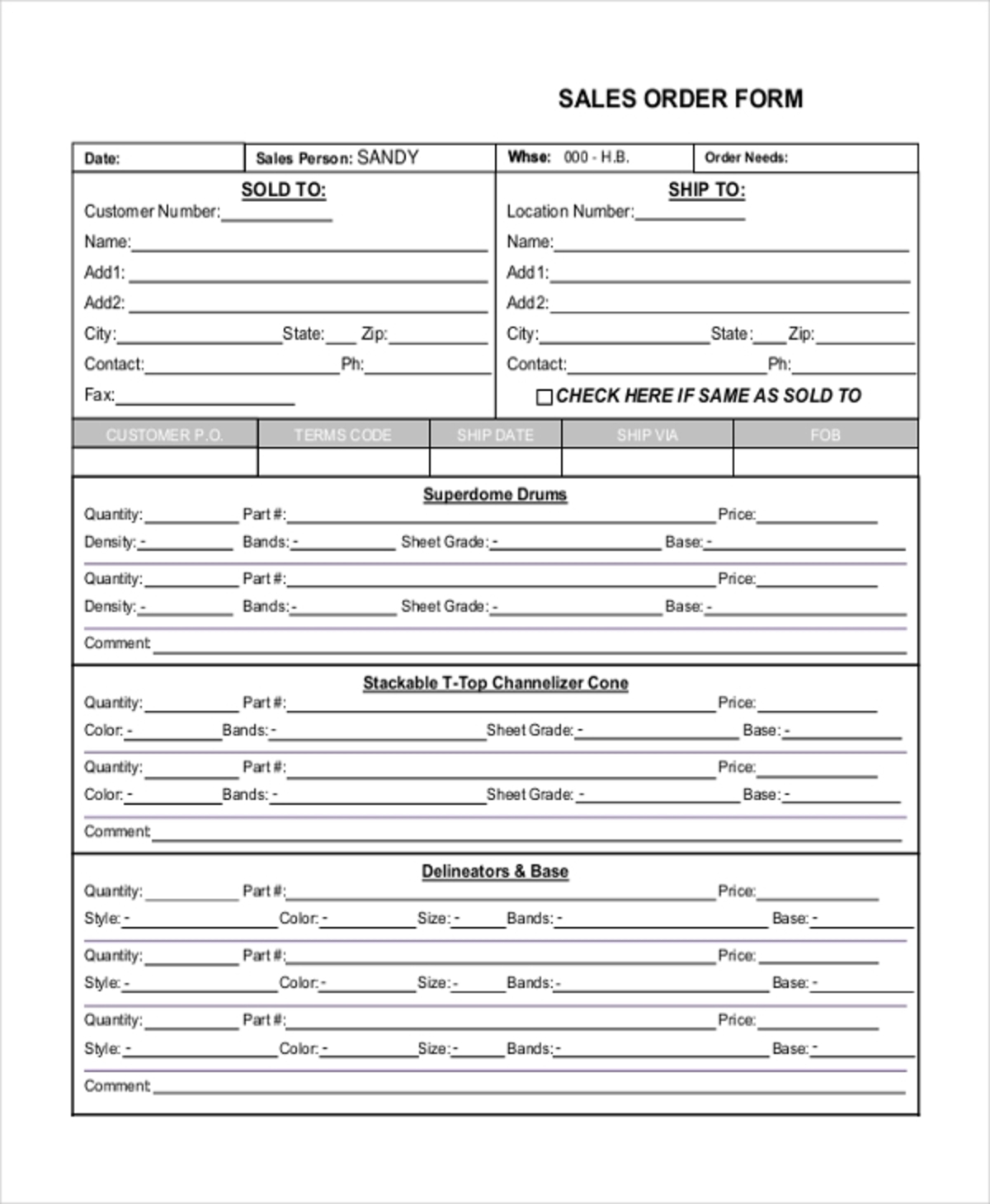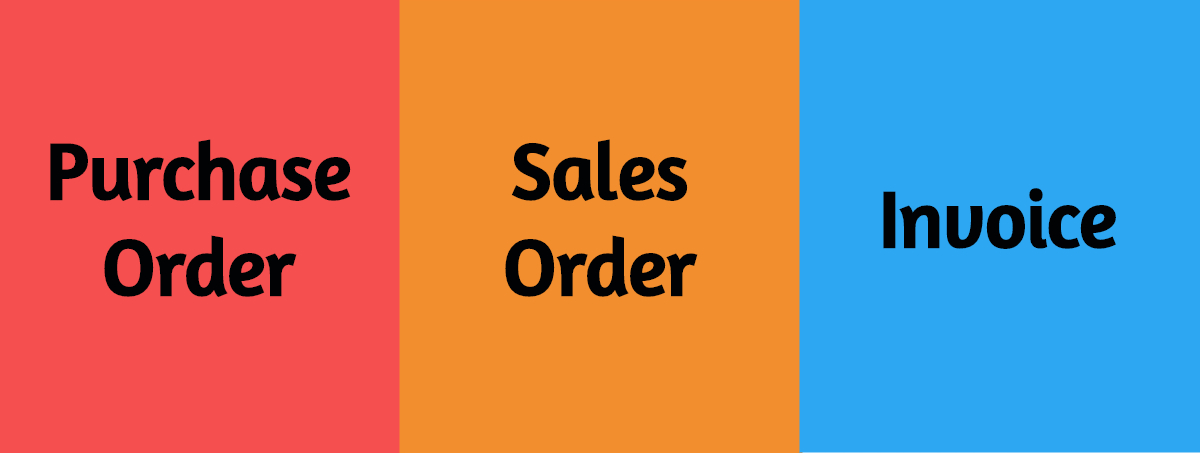What is a Sales Order? And Why Should You Care?
In business, especially in B2B (business-to-business), perhaps you all have ever heard about Sales order. However, do you actually understand about it? Well, not many people can certainly say “YES”.
Many people may understand the sales order in some aspects but sometimes mistake them for other similar documents like Purchase Order (PO) and Invoice. The root of it is that they don’t have a deep understanding of the Sales Order.
So, what exactly is a sales order? How to distinguish it from other documents? And is it necessary in the business process? All will be explained clearly in this article!
What is a Sales Order?

A Sales order, or a SO is a popular term in the world of business. It is widely used by plenty of parties such as wholesalers, retailers, manufacturers, and suppliers.
A sales order is a document created by the sellers to reconfirm the transaction that was ordered by the buyers. This sales order, which will be sent to buyers afterward, usually includes information about the number of goods or services, their quality, and prices.
On the other hand, a sales order can also be understood as an internal document made by the sellers (sometimes called a vendor) themselves and saved as a record in the company. In the sales orders, you will be provided with the information about the date and place for delivering products, method to pay the bill, and many other related information to the regulation and logistics of each transaction. Hence, it is an effective tool for the store to keep up with the latest figure of the order they fulfill.
Sales Order, Purchase Order and Invoice: What are the Differences?

In business, there exists not only sales orders but also purchase orders and invoices. Three of them are quite similar in some aspects that make several people, particularly the freshers, mistake them for each other.
Now, let’s look at this section to find out the differences among them and recognize them with ease.
Sales Order
As mentioned above, a sales order is the document created to help both sellers and buyers confirm everything in the transaction, from the product quality to shipping methods, and allow sellers to keep track of their orders.
When you purchase a product or service, a sales order will be delivered to you to confirm that both the selling parties understand your desire correctly. Consequently, everything happens in an accurate direction.
Purchase Order
A purchase order, or PO, is a list of buyers’ goods or services and then sent to the sellers. It consists of the details about the items or services that they wish to buy from the sellers.
This kind of order is used at the beginning of the purchase process when the buyers want to start a conversation with the sellers about what they want to get.
Invoice
Invoice is a document that is generated by the sellers. It is sent to the buyers who already purchased their products or services and received full of them. In the invoice, buyers will be provided with the amount of money that they have to pay for what they received and request them to foot the bill.
Due to its purpose, sellers only send invoice when all the products or services already came to customers.
Sales Order vs Purchase Order
Similarities
- Include a list of products or services for the transaction
- Force seller and buyer obey the information there when it is accepted by the receiving.
- Used commonly in the transaction of B2B (business-to-business) transaction
Differences
| Sales Order | Purchase Order |
|---|---|
| Created by the sellers | Created by the buyers |
| Regarded as an internal document in a business | Regarded as an external document in a business |
| Include Purchase order number | Not include Sales order number |
| Sent at the end of purchase process | Sent at the beginning of the purchase process |
| Can be sent to buyers when purchase order is not created in the business process | Can be removed from the business process but in some recent policies, it is compulsory like “No PO No Pay Policy” (the buying party will not pay the bill unless the selling one send them purchase order) |
Sales Order vs Invoice
Similarities
- Sent by the sellers
- Contain detailed information of the order
- Delivered when buyers receive the products
Differences
| Sales Order | Invoice |
|---|---|
| Include the exact day that sellers started processing the Purchase order from the buyers | Include the exact day that sellers sent buyers the bill of the products and services they had already received |
| Sent to the buying party after the purchase order is processed | Sent to the buying party after the seller estimate and announce the cost of the products or services ( usually after the buyers receive full of products or services) |
| Optional in the business process | Compulsory in the business process (to ask for payment) |
Purchase Order vs Invoice
Similarities
- Include detailed information of the transaction such as name of the items or services, the quantity, and the price
- Used by accountants or the accounting department to calculate the purchasing and sales exactly for keeping on records
- Contain the address of sellers and buyers
Differences
| Purchase Order | Invoice |
|---|---|
| The buying party is sender and the selling party is recipient | The selling party is the sender and the buying party is recipient |
| Created with the aim of informing sellers the desire of the buyers | Created with the aim of informing buyers that they need to pay the bill |
| Take place at the beginning of the purchasing process | Take place nearly the end of the purchasing process |
The Importance of Sales Order
Keep track of the inventory
To the selling party like sellers, vendors, or suppliers, sales order plays an important role in supporting them tracking inventory easily. Since in each sales order, the number, type, name, and quality of the products are displayed transparently, the selling party will be aware of the details of products in stock, products in the previous transaction as well as the products needed to be bought more in a couple of minutes.
Ensure that every party obey the deal
If sellers accept a purchase order, it means the deal between them and buyers become legally binding. As a result, when you feel confused or vague about some terms in the purchase orders, it’s time to ask for consultation from your legal counsel. They will help you shed light before your decision to sign or not. When signing, you should keep your sales order on record since it will be an efficient tool to make sure that you can complete the transaction as in the agreement.
Decrease the risk of material misstatement
A material misstatement is a mistake caused by the inaccuracy in conducting a financial statement that has a greater effect on financial decisions since it is often regarded as a primary source. Thus, any material misstatement in the financial reports can lead to an adverse consequence for the company.
For example, when a mistake is made in the statement of the ending inventory, the profits will be calculated incorrectly due to this mistake. This case even becomes more serious when your business is being audited. You can be charged with fraud.
For this reason, a sales order is an indispensable part of any transaction. It will record all the necessary information during each sale so that you can be sure that the likelihood of material misstatement will reduce considerably.
What a Sales Order Process Looks Like

In fact, the business process often starts with the buying party, customers when they create a request for quote (RFQ) and send it to the selling one or vendor. The vendor, after receiving the RFQ from the customer, will send them the quote.
Via the quote, the buyers will consider the price of the products or services, and if it is affordable, a purchase order will be sent back to the vendor. The vendor, afterward, will read the purchase order carefully. In case they accept the purchase order, a sales order will be created based on the information in the purchase order. This sales order helps both the buying and selling party confirm what will be involved in their transaction.
Next, sellers will manufacture or gather all the necessary products and services as in the sales orders, packaging the order, and sending it to the customer’s address. When the customer receives the products, often when full of products are shipped, an invoice will be sent to buyers to ask for payment.
If there is no problem, the customers will then foot the bill according to what is stated in the invoice, and the transaction finishes successfully.
As can be seen from the business process above, the sales order is the central component which is responsible for making sure that all the stakeholders involved in the transaction will understand clearly. This, consequently, reduces the rate of possible mistakes in the sale due to the lack of detailed information.
An Example of Sales Order
James is the manager of a large company. He is responsible for distributing products, which is a crucial mission since it makes sure that the product shipped to the customers will be as perfect as what they were in the warehouse. This also helps him sharpen his advantage: punctuation and concentration, which is used daily.
In his work, he often has to deal at numerous large orders to always keep in mind that he must complete everything carefully since his small mistake can lead to great trouble for the company.
Recently, his company has just achieved a big order with a high price so that he needs to be more careful than ever. When receiving the Sales order from the sales teams, including full of customer’s requirements, James will share it with his team partners.
After that, the Sales order will be delivered to the warehouse team. There, people will assemble the products according to the document that James sent them. When collecting the items sufficiently, people will put these products all in the pallets and move them to the packaging team.
The packaging department’s main and sole task is to guarantee the product will be protected carefully in the shipping process. To do that, the products are usually placed in sealed boxes to resist the shock. Besides, it is used as a means of shipping items. It can also be exploited for marketing purposes since it is entirely possible to add some marketing materials to the packages.
Of course, when all these steps are done, these products will be sent back to the pallets nearby the loading dock. And they will be delivered to the customer’s address the next day.
However, things don’t occur as the plan: the buyers want to change something and send the amendment to the purchase. Fortunately, his company uses electronic documents, so he sends this amendment to his colleagues immediately. They also react to the case right after receiving the document, and the order can be shipped timely.
Conclusion
In short, it can be denied that sales order is a crucial element in the business process. Understanding simply, it is a document with the mission to confirm the information they had already agreed with each other.
With the help of sales orders, you can manage your inventory effectively, make sure that the others cannot violate the contract, and prevent the case of material misstatement.
New Posts







